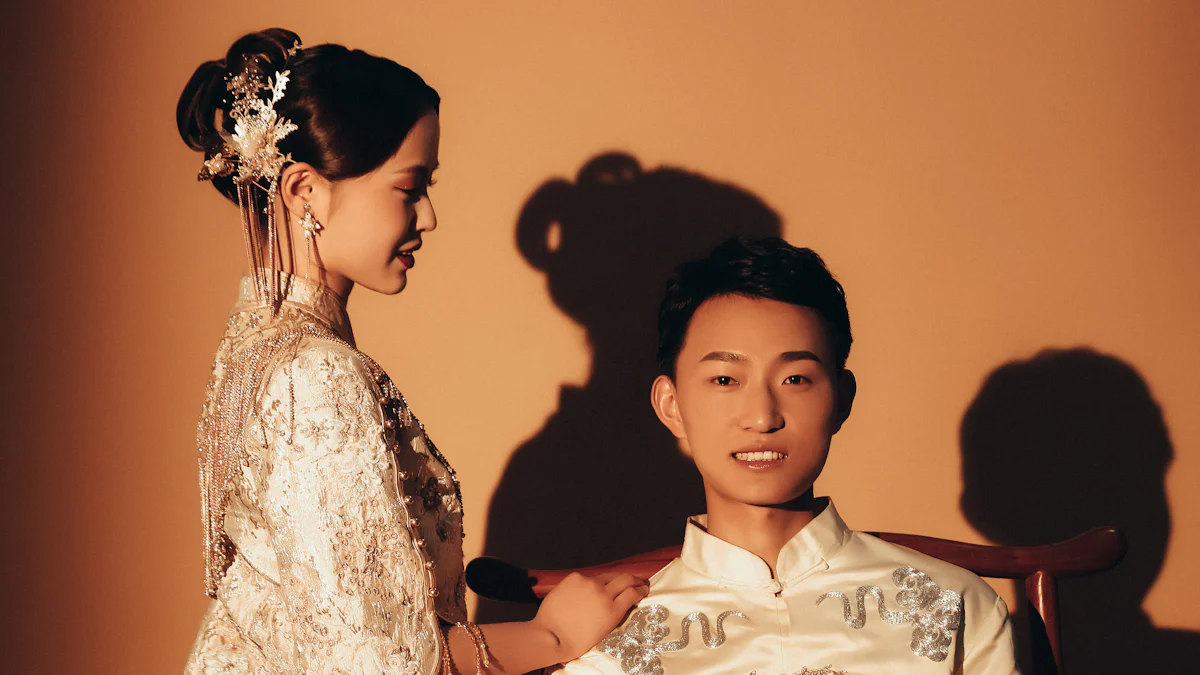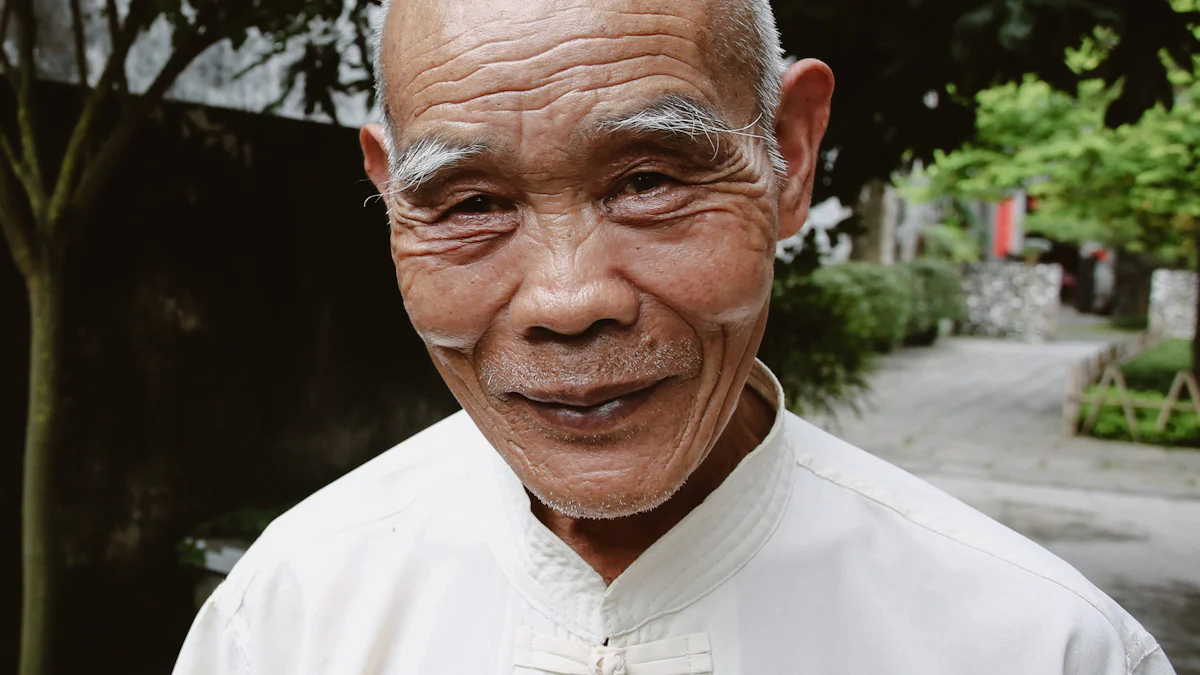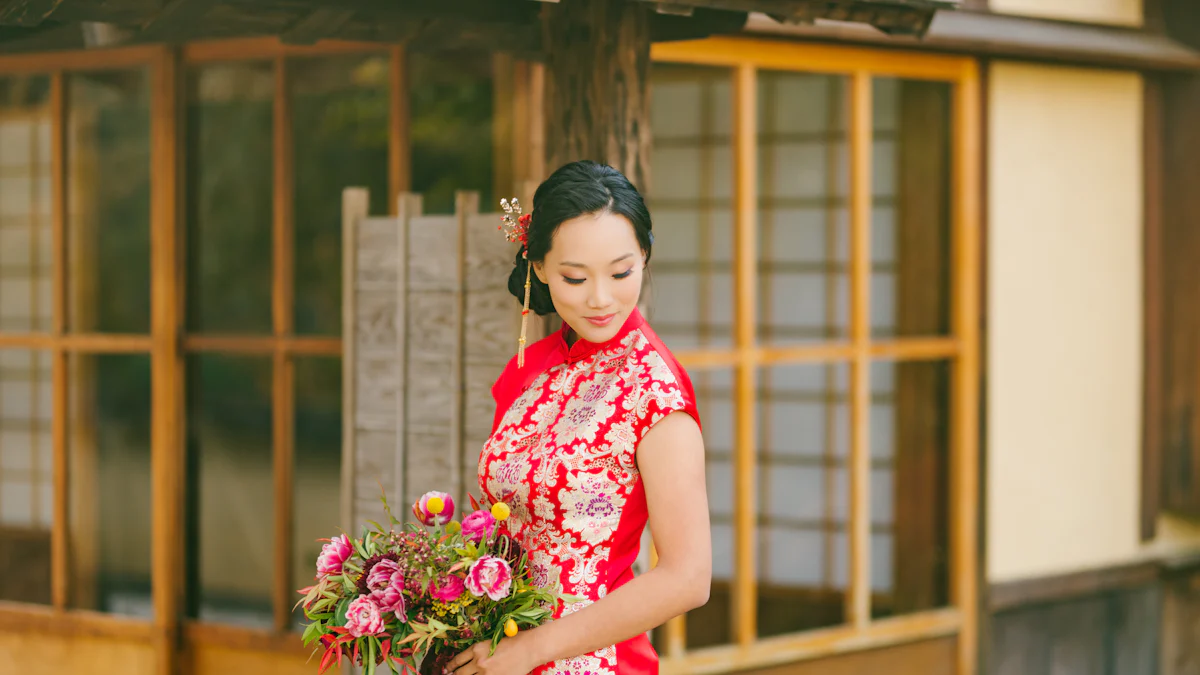
In the realm of traditional Chinese attire, the Tang suit and men’s cheongsam stand as iconic representatives of cultural elegance and historical depth. Understanding the roots of these garments is akin to unraveling a tapestry woven with threads of heritage and artistry. The Tang suit, originating during the Qing Dynasty, has evolved from opulent robes to versatile ensembles embraced globally today. Similarly, the men’s cheongsam mirrors this evolution, blending traditional elements with modern flair. Delving into their influence unveils a narrative of sartorial continuity and cultural resonance.
The Tang Suit

In the realm of traditional Chinese attire, the Tang suit holds a rich historical tapestry that weaves together influences from various dynastic periods. Originating during the Qing Dynasty, this iconic ensemble evolved from the noble garments worn by aristocracy to a versatile outfit embraced by common people. The Tang suit is not merely a garment but a cultural emblem that celebrates China’s golden history.
The design elements of the Tang suit reflect a harmonious blend of Manchu and Western styles. Its straight lines and high collar pay homage to traditional aesthetics while incorporating modern sensibilities. The use of Chinese knot buttons adds intricate detailing, symbolizing unity and prosperity in every stitch.
Culturally, the Tang suit serves as a bridge between past and present, embodying the fusion of Chinese heritage with global influences. It stands as a symbol of cultural identity, representing resilience and elegance in an ever-changing world. The evolution of the Tang suit showcases how tradition can seamlessly intertwine with contemporary fashion trends, creating a timeless allure that transcends generations.
As we unravel the historical threads of the Tang suit, we discover not just a garment but a living testament to China’s enduring legacy. From its humble origins in the Qing Dynasty to its modern-day resurgence, the Tang suit continues to captivate hearts worldwide with its timeless charm and cultural significance.
Influence on Men’s Cheongsam

As the Tang suit weaves a tale of historical evolution, its influence on men’s cheongsam echoes through the corridors of sartorial elegance. The design similarities between these iconic ensembles unveil a harmonious blend of tradition and modernity, creating a visual symphony that resonates with cultural enthusiasts worldwide.
Form-fitting silhouette
The form-fitting silhouette of the men’s cheongsam pays homage to its roots in Chinese fashion history. Embracing the contours of the male physique, this tailored garment exudes sophistication and charm. Each stitch is a testament to precision and artistry, sculpting a silhouette that stands the test of time.
High collar and straight lines
The high collar and straight lines of the men’s cheongsam harken back to an era where elegance was paramount. These design elements not only accentuate masculine features but also symbolize grace and refinement. Every detail, from the crisp lines to the structured collar, speaks volumes about the wearer’s appreciation for timeless style.
Evolution of Men’s Cheongsam
The evolution of men’s cheongsam mirrors a journey through time, where traditional elements seamlessly merge with contemporary trends. Adapting to changing styles and needs, this garment has transcended its origins to become a symbol of cultural pride and fashion innovation.
Adaptation of traditional elements
The adaptation of traditional elements in men’s cheongsam showcases a delicate balance between heritage and modernity. From intricate patterns to subtle embellishments, each design choice reflects a deep-rooted respect for Chinese craftsmanship. This fusion of old and new breathes new life into an age-old tradition, ensuring its relevance in today’s fast-paced world.
Modern variations and trends
In embracing modern variations and trends, men’s cheongsam paves the way for future generations to connect with their cultural heritage. From bold colors to innovative cuts, each reinterpretation adds a layer of excitement to this timeless attire. The evolution continues as designers push boundaries, reimagining classic silhouettes for contemporary audiences.
Cultural Continuity
The cultural continuity embodied by men’s cheongsam is more than just fabric; it is a living legacy passed down through generations. By preserving traditional attire, wearers pay homage to their ancestors while forging new paths in the world of fashion.
Preservation of traditional attire
The preservation of traditional attire in men’s cheongsam serves as a bridge between past traditions and future aspirations. Each stitch carries with it stories untold, weaving together narratives of resilience and creativity. As wearers don this iconic garment, they embody a spirit that transcends time—a spirit rooted in culture and boundless imagination.
Reflection of cultural heritage
Through its reflection of cultural heritage, men’s cheongsam becomes more than just clothing; it becomes a vessel for storytelling. Each thread tells tales of dynasties past, customs upheld, and identities celebrated. In wearing men’s cheongsam, individuals not only honor their roots but also pave the way for future generations to embrace their unique heritage.
Modern Relevance
Popularity in Contemporary Fashion
Fashion enthusiasts worldwide are increasingly drawn to the allure of traditional Chinese attire, embracing the timeless elegance of Tang suits and men’s cheongsam. The resurgence of these iconic garments reflects a cultural revival that transcends borders and generations. From vibrant celebrations to intimate gatherings, individuals are choosing to make a stylish statement by donning these exquisite ensembles.
- Embracing Tradition: The appeal of Tang suits and men’s cheongsam lies in their ability to blend heritage with modernity seamlessly. Each stitch tells a story of craftsmanship and tradition, resonating with wearers who seek to honor their roots while making a bold fashion statement.
- A Stylish Affair: Wearing a Tang suit or men’s cheongsam is not just about clothing; it’s about embodying a rich cultural legacy. The form-fitting silhouette and intricate details exude sophistication, creating a unique and stylish look that captivates onlookers and wearers alike.
Cultural Revival
The growing interest in traditional attire like Tang suits and men’s cheongsam signifies a broader movement towards preserving cultural heritage and celebrating diversity. As more individuals embrace these iconic garments, they become ambassadors of tradition, weaving together narratives of the past with visions for the future.
“By wearing Tang suits and men’s cheongsam, individuals pay homage to their ancestors while paving the way for future generations to connect with their cultural identity.”
- Influence on Fashion Trends: The impact of Tang suits and men’s cheongsam extends beyond personal style choices; it influences modern fashion trends globally. Designers draw inspiration from these classic ensembles, infusing elements of Chinese aesthetics into contemporary designs, creating a harmonious fusion of East meets West.
- Bridging Generations: Through the revival of traditional attire, Chinese expats and enthusiasts worldwide bridge generational gaps, fostering an appreciation for cultural diversity. Each time someone adorns a Tang suit or men’s cheongsam, they carry forward a legacy steeped in history—a legacy that continues to shape the tapestry of global fashion.
In the realm of traditional Chinese attire, the Tang suit’s influence on men’s cheongsam is a tale woven with threads of heritage and artistry. Reflecting a blend of tradition and modernity, these iconic ensembles symbolize cultural resilience and elegance. The Tang suit’s evolution from historical opulence to contemporary versatility mirrors China’s enduring legacy. As wearers adorn these garments, they embody stories untold and celebrate a rich cultural heritage that transcends time.
Embracing Tang suits and men’s cheongsam signifies more than just fashion; it is a tribute to ancestral roots and a bridge between past traditions and future aspirations. By donning these exquisite ensembles, individuals become ambassadors of tradition, weaving narratives of resilience and creativity into the fabric of global fashion. The modern relevance of traditional Chinese attire lies in its ability to captivate hearts worldwide with timeless charm and cultural significance.






